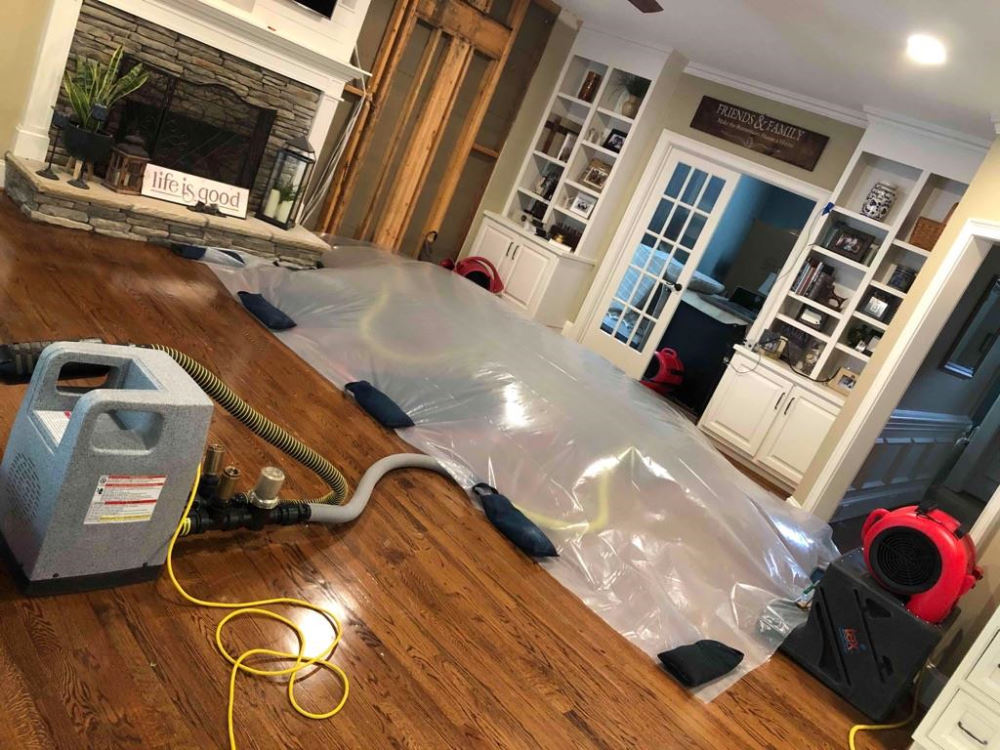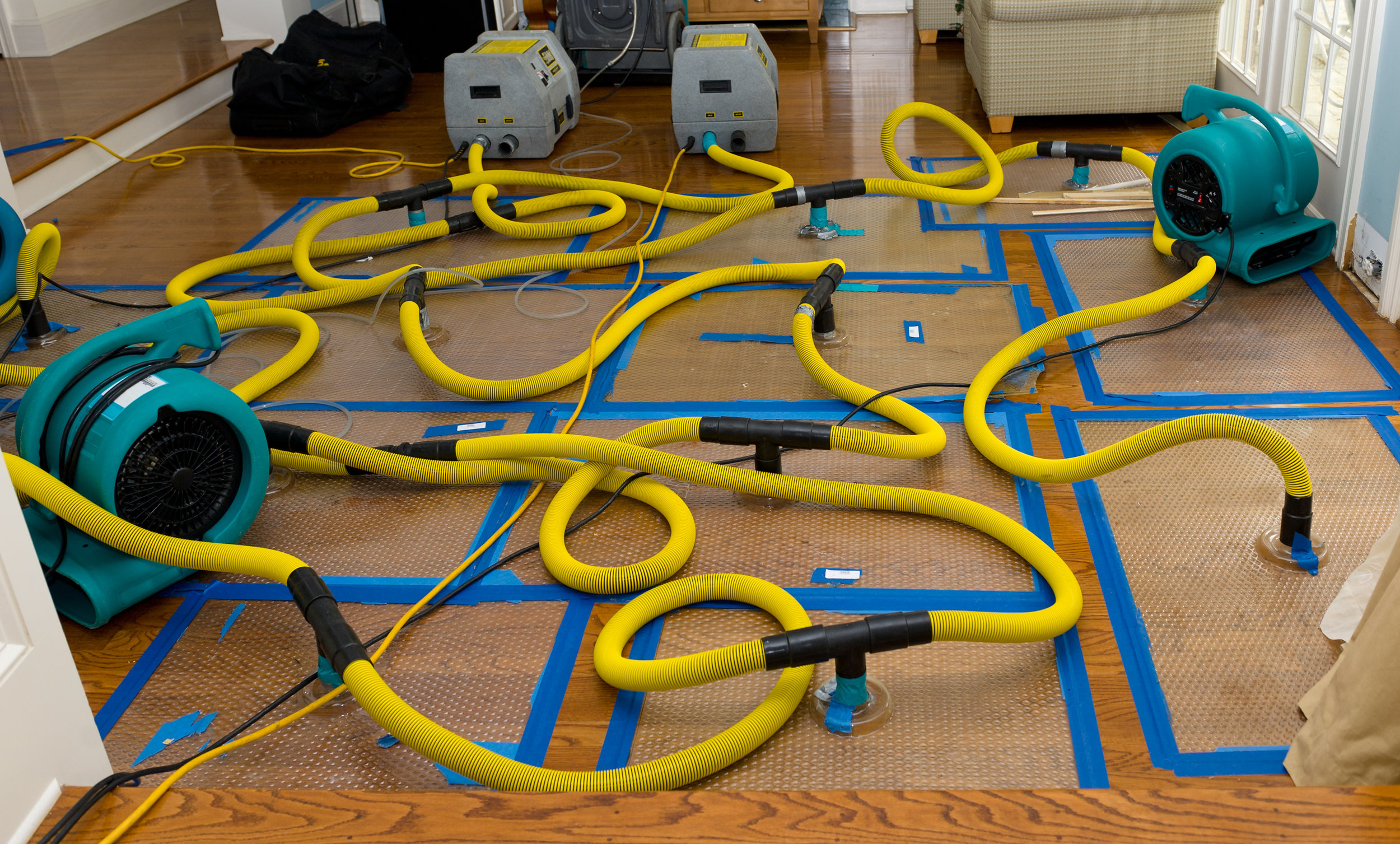Understanding Health Hazards Related to Delayed Water Damage Restoration St George UT
Important Steps to Comply With for Efficient Water Damage Remediation in Your Home
When confronted with water damage in your house, knowing the crucial steps for efficient restoration can make all the difference. You need to examine the damage and warranty security prior to taking on the issue. Stopping the source of water is important, however it's just the beginning. There's a series of actions you have to take to secure your building from additional concerns as soon as you have actually managed that. Allow's explore what you ought to do next.
Assess the Damages
The very first step is to analyze the damage thoroughly when you uncover water damage in your home. Begin by determining the resource of the water invasion. Examine for leaks, burst pipelines, or other problems causing the issue. Next off, examine the influenced areas for noticeable indicators of damages, consisting of discoloration, mold, or bending development. Don't neglect to search in concealed areas like behind walls or under floor covering, as water can leak right into these locations unnoticed.Document the damage by taking clear pictures and notes. This will certainly assist you when reviewing the scenario with your insurance coverage copyright or restoration professionals. Pay interest to the sort of products impacted, as various materials need different remediation approaches. Evaluate the extent of the damages. Is it small or extensive? Understanding the range will direct you in making a decision whether to handle it yourself or call in the experts for an extra comprehensive repair process.

Ensure Safety
Prior to you start any kind of reconstruction work, assuring your security is vital. Assess the condition of your home. If the water's deep or if you discover electrical risks, don't enter the location. Shut off the power and gas supply to avoid accidents. Use protective equipment like boots, masks, and handwear covers to protect yourself from contaminants or mold.It's important to remain knowledgeable about your environments; watch for slippery surfaces and sharp items. If the water is from a sewer back-up, treat it as unsafe waste. Keep children and pet dogs far from affected areas to stay clear of exposure.Once you've taken these precautions, you can continue with the reconstruction process. Bear in mind, your safety and security comes first, and if you're ever before unclear, it's best to seek advice from a specialist. Taking these steps will certainly help ensure you prepare to take on the repair securely and effectively.
Stop the Source of Water
After ensuring your security, the next step is to stop the resource of water. Recognize where the leak is originating from. Maybe a burst pipeline, a malfunctioning appliance, or also hefty rain getting in with a harmed roof covering. Turn off the major water supply to your home to stop more flooding if it's a plumbing concern. For appliances, unplug them and shut down their water supply valves.If the source is outdoors, like rainwater, try to divert it away from your home using sandbags or other barriers. For small leaks, you may be able to utilize tape or a sealer temporarily until a specialist can repair it. Bear in mind, attending to the source quickly is vital to reducing damage and avoiding mold and mildew development. As soon as you've stopped the water, you'll remain in a better setting to proceed to the following actions in the remediation procedure.

Get Rid Of Excess Water
Act promptly to eliminate excess water, as standing water can cause a lot more comprehensive damage and mold development. First, collect your devices: a wet/dry vacuum, containers, and towels. You can use towels to soak up the moisture if the water is superficial. For deeper water, a wet/dry vacuum cleaner is your best option. Ensure to empty the vacuum regularly to avoid overflow.If the water is infected, like from a sewer backup, wear safety equipment, consisting of masks and handwear covers, to maintain yourself risk-free. Once you've gotten rid of as much water as possible, examine for surprise pockets of dampness in corners and under furniture, as these can harbor mold.Don' t forget to turn off electric home appliances and power electrical outlets in wet areas to avoid hazards. This first action is crucial in decreasing damage and setting the phase for a successful reconstruction process.
Dry and Dehumidify the Area
When you have actually eliminated the excess water, it's crucial to dry and evaporate the area extensively. Beginning by utilizing dehumidifiers effectively to draw moisture out of the air and protect against mold and mildew growth. Watch on humidity degrees to assure the space dries have a peek at these guys out entirely.
Remove Standing Water
To successfully take on water damage, you require to concentrate on eliminating standing water as rapidly as feasible. Beginning by gathering needed devices, like a wet/dry vacuum or a pump, relying on the quantity of water. A vacuum ought to do the technique if the water is superficial. For larger quantities, a pump is a lot more efficient. While working, ensure to use safety gear to maintain yourself risk-free from impurities. As you get rid of the water, pay focus to hidden areas like under furnishings or in corners where water might collect. When you've removed the majority, your room will certainly begin to dry. This step is crucial, as remaining water can cause mold and mildew development and a lot more comprehensive damage.
Use Dehumidifiers Effectively
How can you properly use dehumidifiers to completely dry and Go Here evaporate your area? Start by placing your dehumidifier in one of the most damaged location, preferably where water damage is most extreme. See to it to shut all doors and windows to develop a closed atmosphere. Activate the dehumidifier and established it to the ideal moisture degree, typically around 30-50%. Empty the water collection tank regularly, or consider utilizing a model with a continual drainage option for benefit. If feasible, make use of followers to improve air movement, assisting the dehumidifier job extra efficiently. Keep the dehumidifier running till you're confident that the area is thoroughly dried out, preventing mold and mildew growth and extra damage (Water Damage Repair). This step is essential for efficient water damages repair
Monitor Humidity Degrees
Monitoring moisture levels is crucial throughout the drying process, as it aids guarantee your room continues to be complimentary from excess dampness. Buy a dependable hygrometer to track humidity accurately. Preferably, you wish to preserve levels between 30% and 50%. If humidity readings rise over this array, you may require to readjust your followers or dehumidifiers to enhance airflow. Check the readings routinely, specifically in areas vulnerable to moisture, like shower rooms or cellars. Take into consideration increasing air flow or making use of added dehumidifiers if you observe relentless high moisture. Remaining on top of these levels not link just speeds up the drying process but also protects against mold and mildew growth, guaranteeing your home keeps safe and comfortable.
Clean and Disinfect Affected Surfaces

Recover and Fix Your Home
After cleansing and disinfecting the impacted areas, it's time to recover and repair your home. Begin by reviewing the damages. Check for structural problems, like deteriorated floors or walls, and deal with any required repair services. Changing damaged drywall or floor covering is essential for both visual appeals and safety.If your furniture or belongings were affected, take into consideration whether they can be salvaged or need replacement. Clean or skillfully restore things where possible.Next, repaint walls and touch up any kind of areas that need interest. This not only enhances look however likewise shields surface areas from future water damage.Don' t neglect to examine your plumbing and appliances for leakages, making sure everything's operating properly. Finally, consider mounting a dehumidifier to stop future wetness problems. By taking these actions, you'll restore your home to its former glory and create a much safer living environment.
Frequently Asked Inquiries
For How Long Does Water Damages Reconstruction Usually Take?
Water damages reconstruction normally takes anywhere from a couple of days to a number of weeks, depending on the level of the damages (Water Damage Restoration St George UT). You'll want to examine the scenario quickly to reduce additional difficulties and ensure appropriate remediation
Will My Insurance Coverage Cover Water Damage Restoration Prices?
Your insurance might cover water damages reconstruction costs, but it relies on your policy. Inspect your insurance coverage details and call your insurance policy representative to clarify what's included and what you need to sue.
Can I Handle Water Damage Restoration Myself?
You can take care of water damage remediation on your own, but it's crucial to examine the scenario. You might desire to call experts if it's substantial. Constantly prioritize security and assure you've obtained the right devices.
What Are the Indicators of Hidden Water Damage?
You could observe indicators of surprise water damage like warped walls, moldy smells, or discoloration. If your floorings really feel mushy or you spot mold, it's time to investigate additionally prior to the situation worsens.
Exactly How Can I Avoid Future Water Damages in My Home?
To avoid future water damages in your home, you should consistently check pipes, seal fractures, preserve gutters, and guarantee proper drainage. Installing a sump pump and wetness barriers can additionally assist maintain your space dry. When you discover water damage in your home, the first action is to evaluate the damage extensively. Act promptly to eliminate excess water, as standing water can lead to extra substantial damages and mold and mildew growth. To efficiently tackle water damages, you need to focus on removing standing water as promptly as possible. As you remove the water, pay interest to hidden areas like under furnishings or in corners where water might gather. Water damages repair normally takes anywhere from a few days to numerous weeks, depending on the level of the damages.